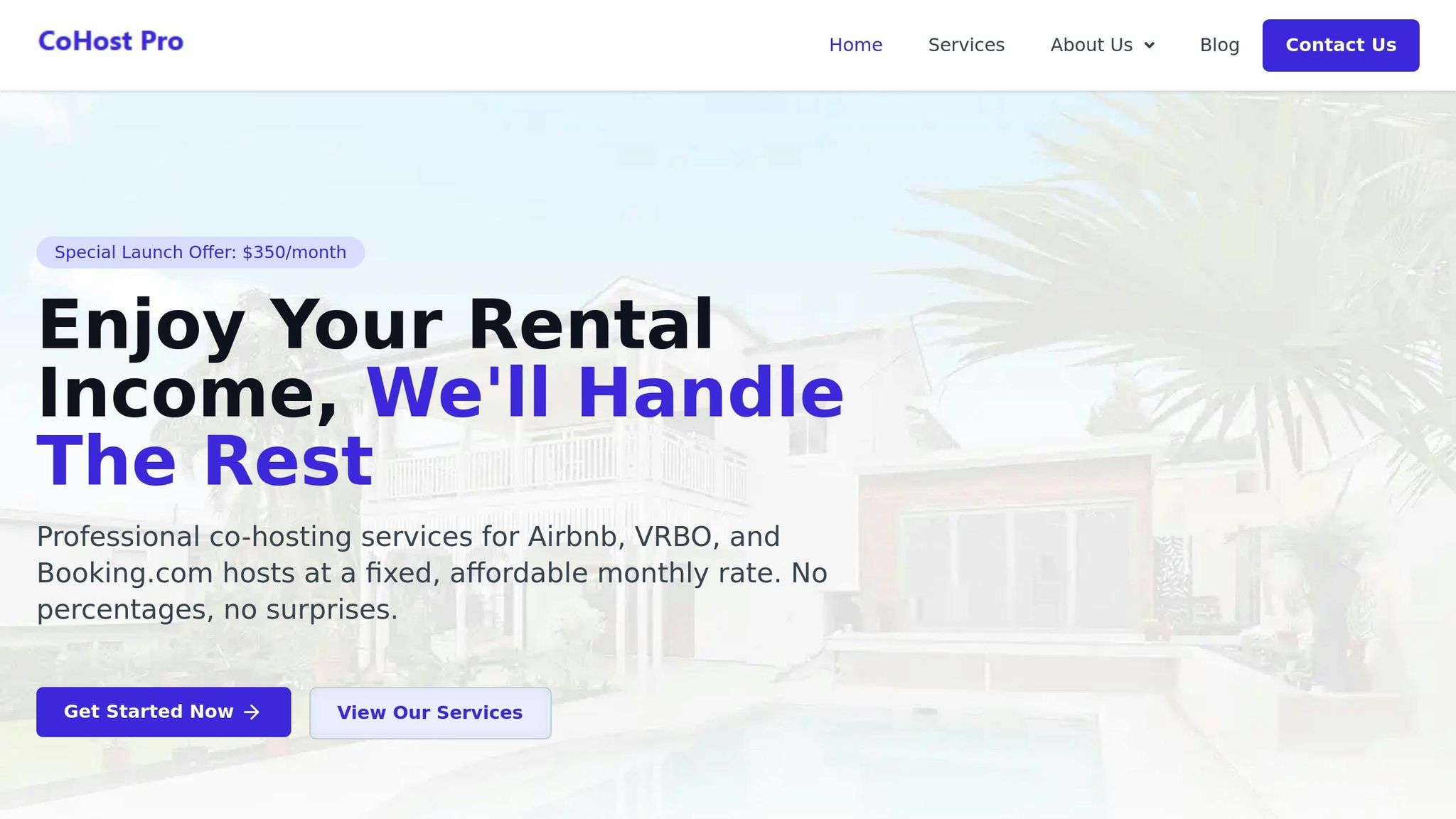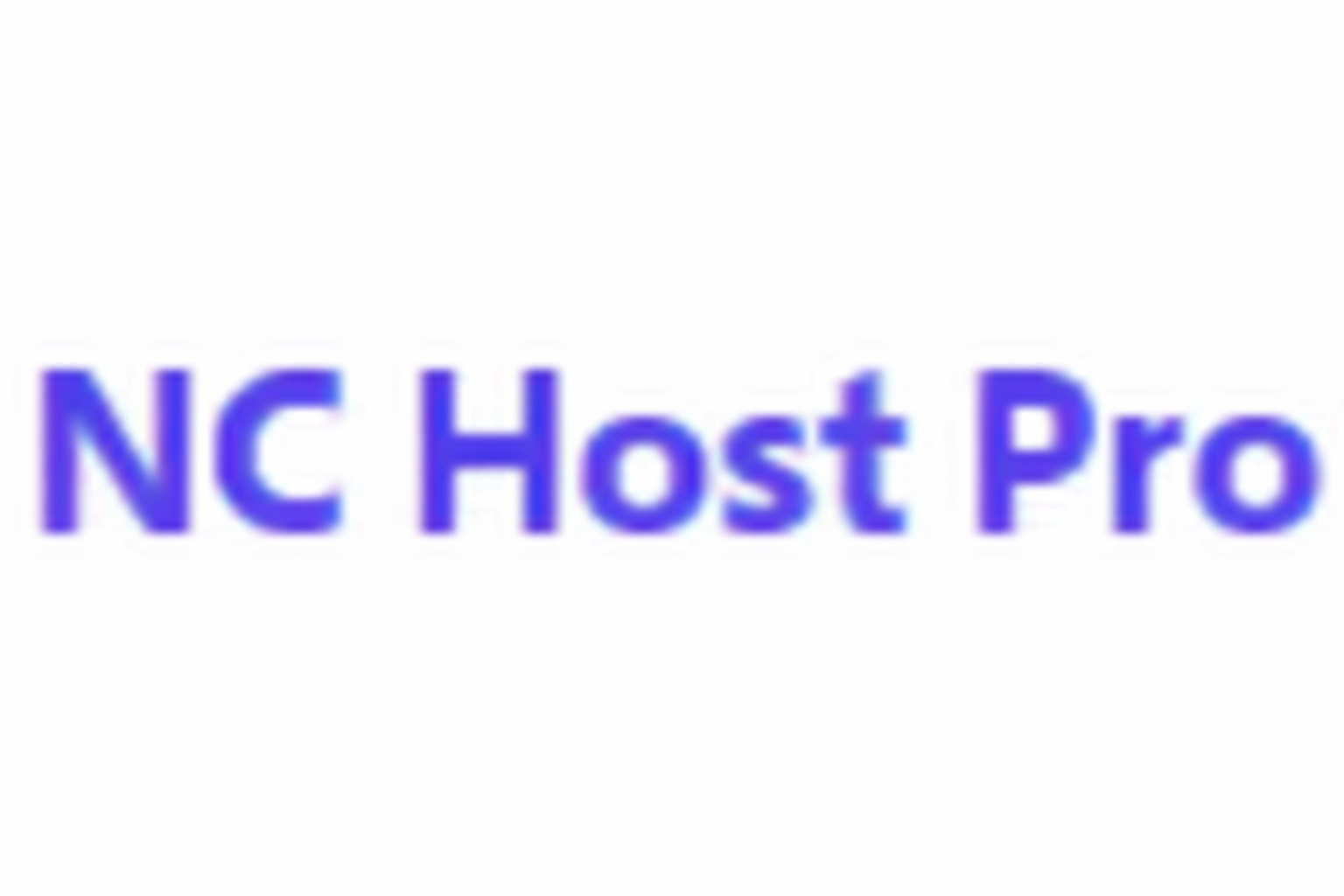Want to maximize your short-term rental income without sacrificing bookings? It all comes down to tracking three key metrics: Occupancy Rate, Average Daily Rate (ADR), and Revenue per Available Night (RevPAR). These numbers help you find the perfect balance between keeping your property booked and earning the most money possible.
Here’s what you need to know:
- Occupancy Rate: Measures how often your property is booked. For example, Raleigh averages 53%, while Chapel Hill exceeds 60% during peak university events.
- ADR (Average Daily Rate): Tracks how much you earn per night. Adjusting rates for seasons, local events, or competitor pricing can boost profits.
- RevPAR (Revenue per Available Night): Combines occupancy and ADR to give a full picture of your property’s performance.
Quick Tip: Use dynamic pricing, adjust for local events, and consider professional management services like NC Host Pro to optimize your earnings. Treat your rental like a business – track these metrics monthly and adapt to market trends to stay competitive.
The #1 Airbnb Revenue Management Metric you NEED to know about!
Key Metrics Every Triangle Short-Term Rental Owner Should Track
To truly understand how your short-term rental is performing, it’s essential to monitor three key metrics. These provide a clear picture of how well your property balances occupancy and revenue in a competitive market. Let’s break them down and see how they can guide your pricing and strategy.
Occupancy Rate
Your occupancy rate – the percentage of nights your property is booked – plays a major role in balancing revenue and availability. It’s calculated by dividing the number of booked nights by the total available nights, then multiplying by 100. Beyond just numbers, this metric helps you spot seasonal trends.
In the Triangle area, occupancy rates can vary significantly depending on location and time of year. For instance:
- Raleigh averages a 53% occupancy rate, with a 4% increase over the past year.
- Chapel Hill often exceeds 60% during the academic year, especially when football or basketball games are in full swing.
- Cary typically sees rates between 50% and 55%, while downtown Raleigh hovers around 51%.
If you notice lower occupancy during off-peak times, consider adjusting your pricing to attract more guests.
Average Daily Rate (ADR)
Average Daily Rate (ADR) reflects how much income you’re earning per occupied night. To calculate it, divide your total revenue – including cleaning fees – by the number of booked nights. In 2023, ADR saw only a slight increase of 0.5%, as more travelers opted for budget-friendly stays. However, a modest 2.1% rise is expected in 2024, according to AirDNA.
Several factors influence ADR, and it’s important to evaluate it alongside occupancy for a complete picture. To improve your ADR:
- Compare your rates to similar properties.
- Use dynamic pricing tools to adjust for demand, seasons, or events.
- Enhance your listing with high-quality photos, polished guest policies, and glowing reviews from satisfied guests.
Striking the right balance here can help you maximize your earnings without sacrificing bookings.
Revenue per Available Night (RevPAR)
Revenue per Available Night (RevPAR) combines occupancy and ADR into one metric, giving you a more comprehensive view of your property’s performance. You can calculate it by multiplying your occupancy rate by your ADR or by dividing your total revenue by the number of available nights.
RevPAR helps you avoid focusing too heavily on either occupancy or ADR. For example, a property with 60% occupancy at a $150 ADR and another with 45% occupancy at a $200 ADR both achieve a RevPAR of $90. This balance shows why it’s crucial to track both metrics together.
Local Factors That Affect Occupancy and Revenue in the Triangle
To make informed decisions about pricing and marketing your short-term rental in the Triangle, it’s crucial to understand the region’s unique characteristics. The local economy, major universities, and regulations all play a significant role in shaping rental performance throughout the year. These factors impact demand and help define strategies for pricing and occupancy.
Local Demand Drivers
The Triangle benefits from a thriving economy and relatively low living costs, which create consistent demand for short-term rentals year-round. Several key drivers contribute to this steady flow of visitors.
Research Triangle Park (RTP) is a major magnet for business travelers, conference attendees, and professionals relocating to the area. With its large concentration of tech companies and research facilities, RTP generates corporate travel demand that remains strong even outside traditional tourist seasons.
The presence of major universities also boosts demand. Institutions like Duke University and Duke Health Systems employ over 43,000 people, while over 42,000 students graduate annually from the region’s colleges and community colleges. This creates a steady stream of bookings from visiting scholars, prospective students and their families, conference attendees, and university staff.
Remote work trends have further increased the appeal of properties offering dedicated office spaces and reliable high-speed internet. Many guests now prefer larger homes that accommodate both work and leisure, often opting for extended stays.
Additionally, the Triangle’s proximity to major hospitals, an international airport, and tech hubs ensures a consistent flow of medical professionals, business travelers, and families visiting patients.
Seasonality and Events
The Triangle experiences predictable fluctuations in occupancy and pricing due to seasonality and events. Raleigh’s short-term rental market tends to peak in the spring and summer, with April, June, and July seeing the highest demand.
Seasonal festivals and events, such as arts, beer, and pride celebrations, drive significant demand spikes during these months, creating opportunities for premium pricing.
University schedules also play a big part in shaping demand. Chapel Hill, for example, often surpasses 60% occupancy during the academic year, particularly during football and basketball seasons. Aligning your pricing strategy with these events can help maximize revenue during high-demand periods.
In 2023, Raleigh’s occupancy rates rose from 68.5% to 70.6%, with nightly rates averaging $129 – an 8.1% increase from 2022. During slower seasons, offering discounts for extended stays and flexible cancellation policies can help maintain bookings.
Regulatory Requirements
Local regulations significantly impact short-term rental operations and costs. In Raleigh, hosts must secure a zoning permit, which costs $194 initially and $86 for renewals. This permit number must be displayed on all advertisements and at the property. Additionally, hosts are required to collect room occupancy and sales taxes, which include a 6% Wake County tax, a 4.75% state tax, and a local tax ranging from 2% to 2.75%.
Guest limits and record-keeping rules also influence how properties are marketed. In Raleigh, guest occupancy is capped at two people per bedroom, plus two additional adults. In Durham, the limit is three unrelated individuals per dwelling unit. Hosts are required to maintain detailed records of rental dates, charges, and taxes for three years.
Durham’s regulations differ slightly but still require compliance with licensing and registration mandates. Hosts must also collect an occupancy tax, calculated as a percentage of the total rent charged.
While these regulatory requirements can add complexity, they also bring structure to the market. As Benjamin Carver explains:
"The Raleigh-Durham STR market isn’t dying – it’s maturing. Investors who adapt to the data, optimize their operations, and stay sharp on regulations are still seeing cash flow and long-term upside".
sbb-itb-f40617d
Pricing Models and Strategies That Work
To stay ahead in the competitive vacation rental market, property owners rely on data to shape pricing strategies that boost profitability. These approaches work hand-in-hand with the key metrics discussed earlier to fine-tune your pricing game plan.
Dynamic Pricing
Dynamic pricing is all about adjusting nightly rates in real time based on factors like market demand, seasonal trends, and local events. This strategy has completely transformed the vacation rental industry. For instance, rates naturally climb during high-demand periods such as peak seasons, weekends, or events like Duke basketball games and RTP conferences.
By using machine learning, you can take this a step further – adjusting rates based on competitor pricing and historical data. To make dynamic pricing work for your property, start by determining a base price that reflects your rental’s value. Then, set maximum price limits to avoid deterring potential guests and keep an eye on metrics like occupancy rate and RevPAR to ensure your strategy aligns with your goals.
Minimum Stay Policies
Strategically setting minimum stay requirements can help boost revenue while cutting down on turnover costs. In the Triangle area, requiring a two- or three-night minimum stay for weekends is a smart move – keeping occupancy high during busy times and reducing cleaning and maintenance expenses. Studies show that properties with minimum stay policies can see RevPAR increases of 17% to 49% compared to one-night stays.
You can also tweak these policies seasonally. During peak demand periods, longer minimum stays might make sense, while offering more flexible options during slower months can help fill gaps in your calendar. These adjustments not only help manage costs but also improve the overall efficiency of your rental operations.
Using Professional Pricing Optimization
For those looking to take pricing to the next level, professional pricing optimization services are a game-changer. These services use advanced data analytics to set the perfect rates, factoring in seasonal shifts, holidays, and local events. In the Raleigh-Durham area, NC Host Pro is a standout option, offering localized insights tailored to events like university schedules, RTP conferences, and seasonal festivals.
Case studies have shown impressive results – properties using professional pricing optimization have reported up to an 80% increase in bookings after implementing strategic pricing adjustments. Additionally, by closely tracking market trends and booking patterns, these services help maximize revenue in a market projected to grow by 10.7%. Choosing a service with a deep understanding of local dynamics can give you a serious edge, ensuring your property stays competitive and profitable year-round.
How to Improve Rental Performance Through Data and Professional Support
When it comes to rental properties, the line between struggling to make ends meet and turning a solid profit often lies in smart decisions and consistent tracking. Regular data analysis and professional support can lead to noticeable improvements in both occupancy rates and revenue.
Monthly Performance Tracking
For property owners in the Triangle area, treating rentals like businesses is key. This means monitoring critical metrics – such as occupancy, average daily rate (ADR), and revenue per available room (RevPAR) – on a monthly basis. Keeping a close eye on these numbers helps identify trends early, giving you time to act before small issues grow into bigger problems.
Here’s an example: A Nashville property manager compared two rentals. Property A had a 90% occupancy rate with an ADR of $150, leading to a RevPAR of $135. Meanwhile, Property B had a higher ADR of $200 but a much lower occupancy rate of 60%, resulting in a RevPAR of just $120. By adjusting Property B’s pricing to $175, its occupancy rate climbed to 75%, and its RevPAR jumped to $150. This kind of data-driven adjustment can make a huge difference in profitability.
To take things a step further, many owners turn to professional management services for additional support and efficiency.
Using NC Host Pro for Property Management

For Triangle property owners who want to improve rental performance without being bogged down by daily tasks, professional co-hosting services like NC Host Pro are a smart solution. Their approach blends local market expertise with advanced tools, making it easier to optimize every aspect of your short-term rental.
One standout feature is dynamic pricing, which can increase revenue by as much as 40%. NC Host Pro uses real-time market data to adjust rates, keeping them competitive. This is especially important in the Triangle, where demand can fluctuate due to university schedules, RTP conferences, and seasonal events.
Guest communication is another critical area. A staggering 69% of guests say that good communication influences their decision to leave a positive review. NC Host Pro handles this with 24/7 guest support, ensuring every inquiry gets a quick, professional response. Plus, their local expertise allows them to provide personalized recommendations, which 40% of guests say they value. These tailored suggestions can significantly enhance the guest experience and increase repeat bookings.
Beyond guest interactions, NC Host Pro takes care of routine cleanings, repairs, and maintenance, ensuring your property stays in top shape. With their fixed monthly fee model, costs are predictable, making budgeting easier. By combining advanced management tools with a deep understanding of the local market, NC Host Pro gives property owners a clear operational edge.
For those serious about improving their rental performance in the Triangle, partnering with NC Host Pro is a practical way to boost efficiency and maximize revenue.
Conclusion: How to Achieve the Right Balance
Finding the sweet spot between occupancy and revenue takes careful tracking, strategic pricing, and sometimes a little outside help. Successful property owners know this isn’t a business you can set and forget – it demands constant attention to performance metrics and local market trends.
Keep a close eye on key metrics like occupancy, ADR (Average Daily Rate), and RevPAR (Revenue Per Available Room) every month to get a clear picture of how your property is performing. And don’t fall into the trap of thinking high occupancy always equals high revenue. Sometimes, slightly lowering your rate to fill more rooms can lead to a bigger overall profit.
These metrics are just the beginning. Local factors like university schedules, events at RTP, and even regulations play a big role in shaping demand. Adjusting your strategy to match these influences can make all the difference.
Dynamic pricing is another powerful tool. By automatically adjusting your rates based on local demand, competitor prices, and seasonal shifts, you can see revenue increases of up to 40%.
But pricing isn’t the only piece of the puzzle. Professional property management can be a game-changer, especially when markets fluctuate. Companies like NC Host Pro offer fixed monthly fees, 24/7 guest support, and dynamic pricing optimization to keep your property running smoothly. With 69% of guests saying communication impacts their reviews, solid management can directly boost your reputation and future bookings.
Treat your short-term rental like a business. That means making decisions based on data, staying flexible with market changes, and bringing in professional help when it makes sense. By focusing on these fundamentals, property owners in the Triangle area can strike the perfect balance between occupancy and revenue.
FAQs
What’s the best way to use dynamic pricing to boost revenue for my short-term rental in the Triangle area?
Dynamic pricing can be a game-changer when it comes to getting the most out of your short-term rental in the Triangle area. By tweaking your rates based on factors like demand, local events, seasonal fluctuations, and what your competitors are charging, you can boost your bookings while maximizing your earnings.
The best way to dive in? Use data-driven pricing tools. These tools analyze everything from occupancy trends and booking patterns to real-time market conditions. They’ll help you set higher rates during busy periods and offer more appealing prices when demand slows down, keeping your calendar filled and your income steady.
It’s also important to regularly review and adjust your pricing strategy to stay ahead in a competitive market. Feeling like this might be too much to handle? A professional co-hosting service like NC Host Pro can step in. They provide expert pricing strategies along with full-service property management, making it easier for you to get the most out of your rental.
How can I increase occupancy during slower periods without significantly reducing my average daily rate?
To keep occupancy rates up during slower periods without slashing your average daily rate (ADR), focus on strategies that provide extra value to guests while keeping profitability intact. For example, you could introduce tailored packages like discounts for longer stays, last-minute booking specials, or promotions that tie into local events or attractions. These targeted offers can appeal to specific guest groups without undermining the value of your property.
Another smart move is tweaking your pricing with care. Small, calculated discounts or flexible booking options can make a big difference. Using dynamic pricing tools to track demand and fine-tune rates ensures you stay competitive while protecting your revenue. By combining thoughtful incentives with strategic pricing, you can keep income steady even during off-peak times.
How do events and university schedules in the Triangle area affect short-term rental demand, and how can I adjust my pricing strategy?
Local happenings such as festivals, concerts, sports events, and university activities play a key role in shaping short-term rental demand in the Triangle, NC. Big moments like move-in weekends, graduations, or homecoming often lead to noticeable surges in bookings.
To make the most of these opportunities, consider tweaking your pricing strategy. Raise your rates during high-demand periods to capitalize on increased interest, and offer discounts during quieter times to keep bookings steady. Staying updated on local event calendars and academic schedules can help you predict these shifts and plan accordingly. This way, you can maintain a good balance between occupancy and revenue.

